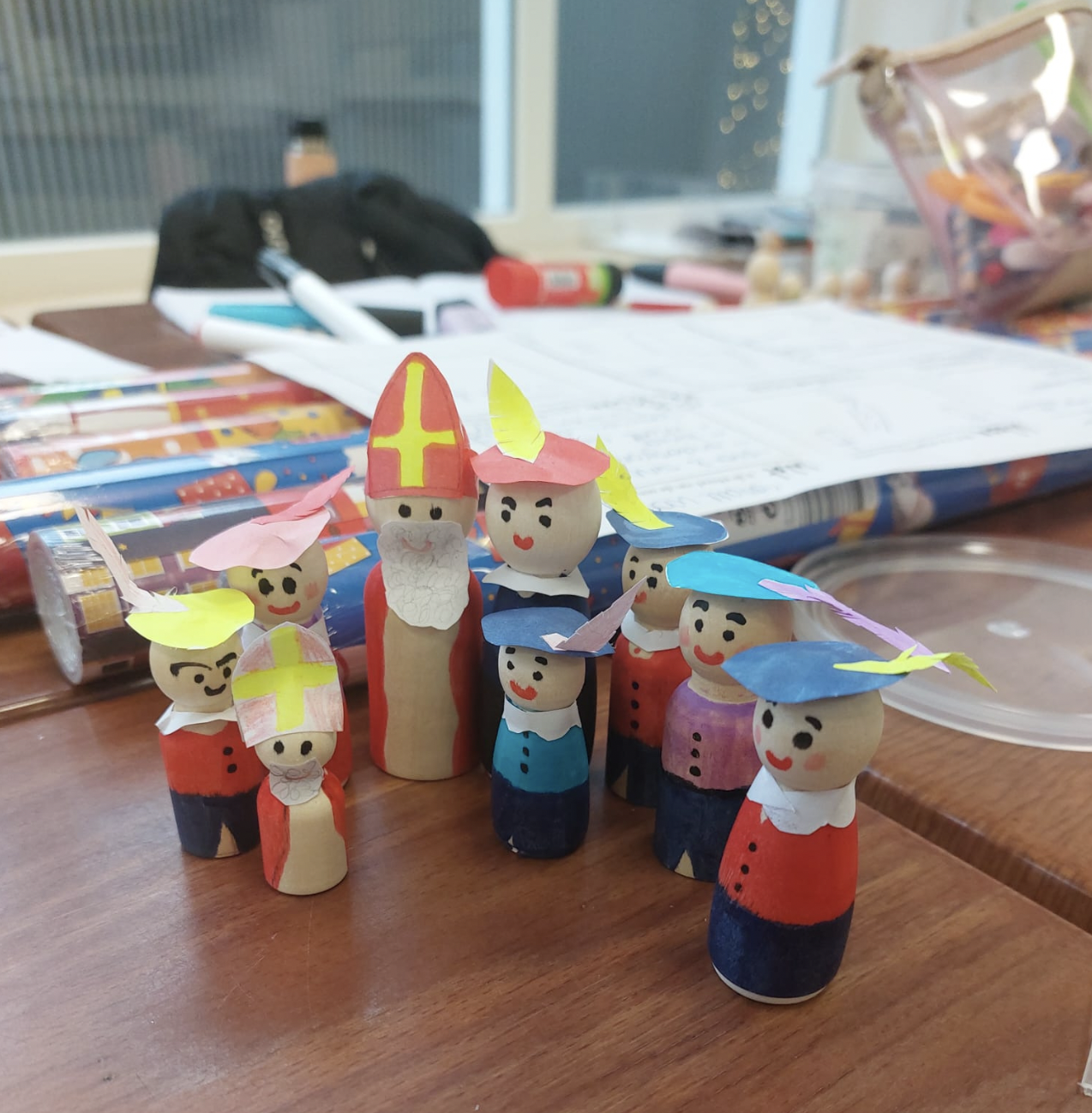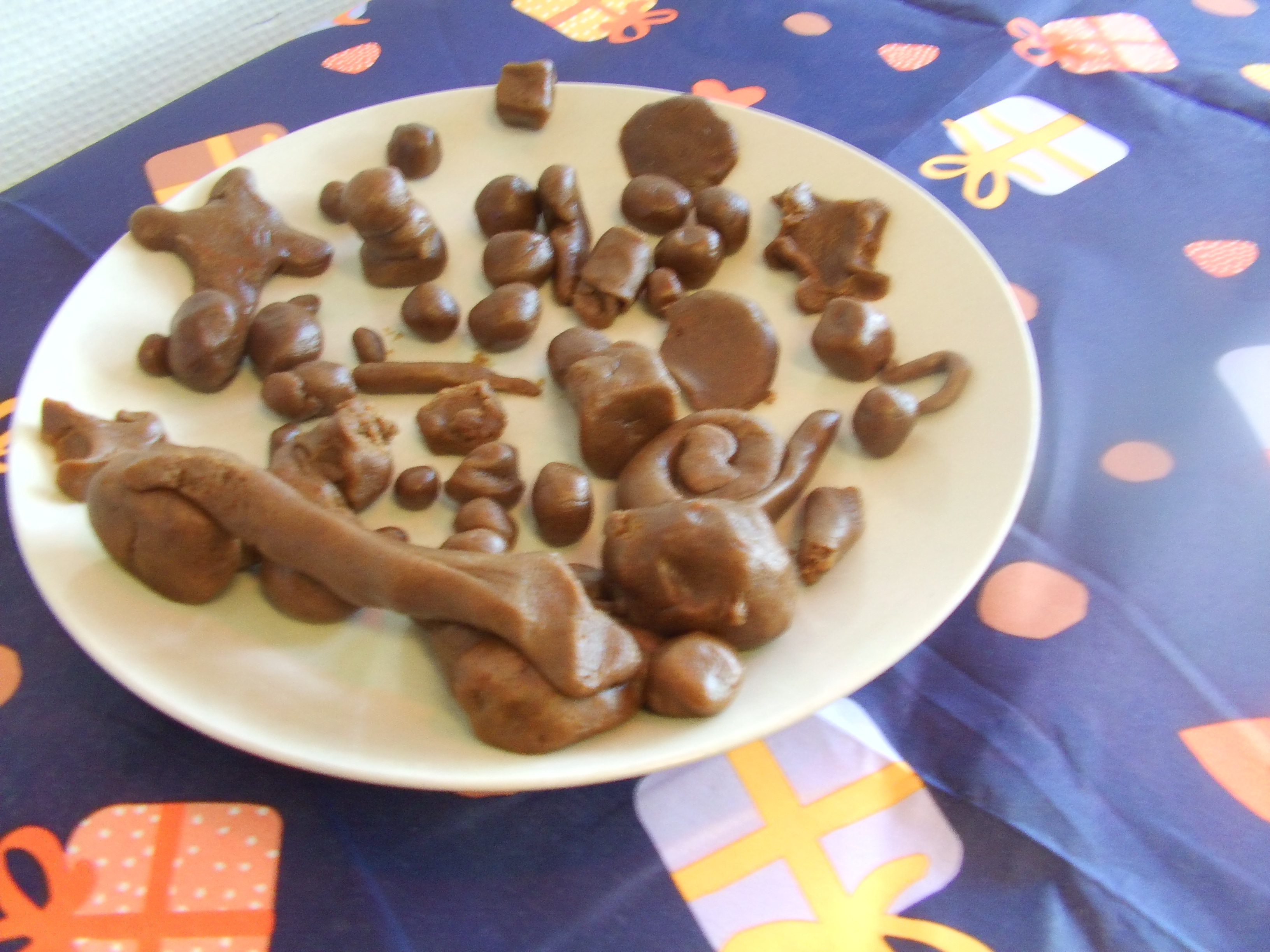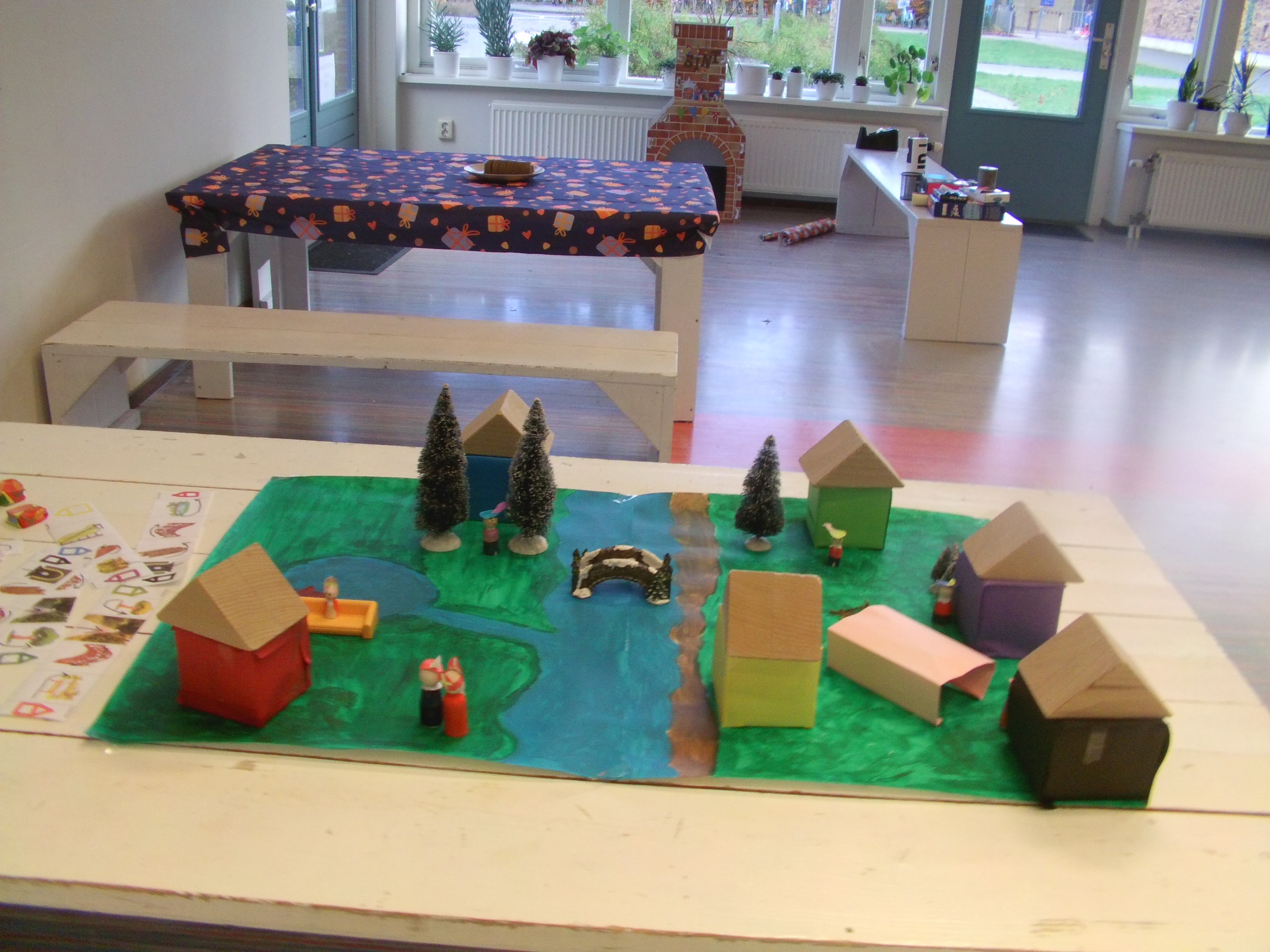Fostering spatial thinking in Early Childhood Classrooms - Rohit Mishra (PhD candidate) and Dr. Remke Klapwijk, Edited by Dr. Marianna Pagkratidou
Nowadays policymakers, educators, and parents
realize that spatial thinking is an important skill to develop from early on. Spatial
ability is a salient psychological characteristic amongst those who chose
higher occupational credentials in STEAM (Science, Technology, Engineering,
Arts, Mathematics). In early childhood classrooms, there are opportunities to
provide pupils with challenging spatial tasks, such as block play, small world
play, hiding, barrier games, pattern spotting in outdoor activities,
navigation, and inquiry corners. However, teachers still need to scaffolds these tasks for
supporting their pupils in the process of
acquiring spatial thinking. In a joint project by the Thomas More University of
Applied Sciences and the Delft University of Technology, eight pre-service
students designed, tested, and evaluated the use of inquiry corners to foster
spatial thinking in two different schools. Through the project, the pre-service
teachers designed engaging corners. These pre-service teachers worked in teams
and collaboratively planned, taught, and reflected on classroom
lessons and gained a great understanding of how to scaffold spatial thinking
through increased use of spatial language and gesture.
Why is attention to spatial thinking important?
When pupils have high spatial thinking skills at an early age, they profit from these skills at a later age while learning math and solving design and technology problems, do better in university during STEAM courses and decide more often to follow a career in STEAM. In addition, spatial thinking is something that anybody can develop at an early age, for girls and boys.
What is spatial thinking?
Spatial thinking involves awareness of space (distance, dimension, and properties of objects) to solve problems through representations and reasoning. For example, how shapes fit together in a block play activity, experimenting and talking about directions, arranging objects to make spatial patterns, or using explored diagrams (2D) to construct models (3D). Spatial thinking skills undergo considerable development for pupils aged four to seven as they develop an understanding of the shape, properties, and size of objects relative to different viewpoints.
Challenges in developing spatial thinking in early childhood classrooms
Currently classrooms, we – teachers - focus more on number sense, measurement, and classification than on patterning, operations, and spatial relationships in our instructions. Researchers have discovered that some children do not have enough exposure to different ways of spatial thinking nor the opportunities to develop spatial skills, which later results in individual differences in the early development of spatial skills. Often, teachers do not explicitly scaffold their learning or provide feedback that moves the pupils toward developing their spatial thinking. Paying attention to spatial skill development is especially relevant in the Early years. Research has shown that although boys and girls have similar spatial thinking qualities in pre-school, at the end of primary school, boys become - on average – better at mentally rotating objects in their minds. This gender gap widens significantly in secondary school and is, amongst others, caused by the fact that girls are less exposed to or less engaged in spatially challenging tasks than boys. Schools can make a difference by offering spatial challenges to everybody.
Pre-service teachers design inquiry corners
For Thomas More and the TU Delft this was a reason to engage pre-service students in designing and evaluating inquiry corners that foster spatial thinking. In inquiry corners, pupils get the opportunity to learn through active, playful engagement with materials and their peers. In our research project, we wanted to find out how pre-service teachers can become more aware of spatial thinking and design engaging and effective activities for 4–7-year-olds. Two groups of four preservice teachers from Thomas More University, Rotterdam designed and tested inquiry corners in two early childhood classrooms to foster spatial thinking. During a one-week intensive session preservice students first received a workshop about spatial thinking in early childhood education. The workshop involved following five tools for fostering spatial thinking:
1. Use of spatial language
2. Use of Gesture
3. Use of manipulatives with “think then do!”
4. Story based design tasks with construction toys
5. Diagnostic assessment of pupils’ learning trajectories and re-design of activities and support strategies
Why spatial language, gesturing and real materials help to develop spatial thinking
In the early childhood classrooms, incorporating spatial language, which is to locate, direct and/or move with corresponding gestures help pupils to use and recall spatial information. Spatial information defines relationships between objects in describing words e.g., above, below, next to, in front of etc. Hands on design tasks further improves pupils conceptual understanding by refining spatial categories, e.g., the difference between 'on' and 'in'. For young learners use of real hands-on learning materials provide more opportunities of engagement with teachers, as pupils interact with real object in multiple ways and use spatial language and gesture for communicating their ideas to peers and to the teachers. However, it goes unnoticed most of the times in early classrooms. Noticing these spatial moments teachers can help pupils in the frequent use of spatial words and gesture in classroom talks.
Testing the corners in schools
Based on the five tools for fostering spatial thinking, the Pre-service students developed inquiry corners adding and explicating features to improve spatial thinking. Both groups took the theme of Sinterklaas (not the same as Santa Claus!) to make their inquiry corner, considering that the intervention took place in classrooms just before the celebration of Sinterklaas :
The first group of pre-service teachers devised 3 different activities in their inquiry corner design (Figure 1).
1. A "small world" prototype: Pupils used different characters to deliver gifts to the small world. This process of providing presents to specific locations in the small world allowed pupils to use spatial words and gestures in giving directions to each other.
2. A baking table: Here, pupils created different shapes of cookies and described the forms to each other.
3. A gift-wrapping section: Here, pupils learn about paper folding and predicting how much paper they need to wrap different sizes of gifts.
 Inquiry corner 1: A "small
world" prototype for navigation activity
Inquiry corner 1: A "small
world" prototype for navigation activity


Engagement and spatial learning in the inquiry corner.
While executing these corners in the classroom, the pre-service teachers found that the pupils enjoyed interacting with the corners. In the small world setup, teachers asked pupils to move different characters in the small world from other houses to the red gift station. Pupils frequently used spatial words such as above, below, under etc., to navigate in the small world and more directional words such as left and right with scaffolded instructional sheets. In this activity, the pre-service teachers learned that giving students spatial words and gestures in advance helps them engage in this task.
In the baking section setup, pupils made different shapes, as shown in the pictures and pre-service teachers asked them to name the shapes. Pupils used different spatial words to describe irregular shapes. The pre-service teachers found it interesting to discuss these shapes with pupils. In the present wrapping section, pupils cut papers in different shapes and sizes to wrap different objects. At the start, pupils took a long sheet of paper to cover all the presents, but later they could better estimate how much paper was needed.
After working with the pupils in the inquiry corners, the four pre-service teachers gave each other peer feedback to improve the lesson delivery. Some of the suggestions were adding more gestures in introducing the small world play, copying shapes of each other in the baking table, making a bigger and smaller sizes of the same shape, and giving different sizes of wrapping paper to choose from for wrapping the gifts. They also discussed how to deal with pupils not moving from one activity to the other in the inquiry corner. For example, the pre-service teacher asked a pupil to help him navigate the small world.
On the next day, they did a re-run of the inquiry corner in early childhood classrooms to implement these lessons learned. The pre-service teachers made these changes in the lesson plan delivery, leading to even more learners' engagement. With a practice of just two iterative sessions, the pre-service teachers found it easy to incorporate a focus on spatial language and gesture in their day-to-day teaching practice. In the present wrapping task, the group found that asking pupils before they start wrapping the presents question such as "how much paper do you think is needed for wrapping this present?" helped pupils visualize before doing the activity. The pupils enjoyed doing these different activities, and the pre-service teacher supported the development of participating pupils' spatial skills. Teachers' awareness of spatial thinking skills allowed them to notice many spatial moments happening in classrooms and explicitly help pupils through language, gesturing, and noticing the kind of feedback and support pupils need. As such, the training followed by iterative and collaborative lesson design effectively integrates spatial learning goals into the existing curriculum.
Want to apply these tools in your classroom?
Do you want to use the five tools to design spatial tasks in early years classrooms?
We are planning to offer this professionalization approach with Monaghan Education Centre (METC). Including one-and-a-half hours of training followed by the guided iterative design of lessons in classrooms – to early childhood teams in schools.
For more information contact:
Rohit Mishra
Science Education and Communication, TU Delft
Early-Stage Researcher- MSCA SellSTEM project
